2024 Norco Range VLT C1 E-Bike
| Where To Buy | |||
|---|---|---|---|
Free Delivery on purchases over £20.
|
Free Delivery on purchases over £20.
£6,999.00
|
||
Norco Range VLT C1
£6,999.00
|
|||
Free shipping on orders over $50 (continental U.S. only).
International shipping available. Some exclusions apply. |
|||

2024 has brought big changes to Norco. After a few stale years post-COVID slowdown, they've revamped much of their line-up for this year. While some brands are cutting spending and trying to keep their heads above water, Norco has taken a bold approach and developed a whole bunch of new models. Included in this revitalization phase is a ground-up revision of the Range VLT. Norco has been investing heavily in high-pivot suspension designs, and the big-hitting e-bike is evidence of that. Going with a high-pivot idler pulley could be considered risky for a full-power e-bike, or it could also be the answer to unrestricted descending performance. We're here to see if the fruits of their investment have paid off.
Highlights
- Carbon front triangle with aluminum rear end
- Dedicated mixed wheels
- 170mm of rear wheel travel // 180mm fork
- Norco's VPS-HP suspension design
- 85 Nm Bosch Performance CX Line motor
- 750 Wh battery
- Customizable power delivery through the Bosch Flow App
- 63-degree head angle
- 76.50-77.50 degree effective seat tube angle (size dependent)
- No geometry adjustments
- Internal cable routing
- UDH equipped
- Size-specific rear center
- Sizes: S1 - S5
- Verified weight (S3, no pedals): 56.75 lb (25.46 kg)
- MSRP: $8,999 USD (C1 Build)
Strengths | Weaknesses |
|
|

2024 Range VLT Overview C1
Outward appearances may hint that the latest Range VLT is only an updated version of the previous model. However, upon further inspection, this new Range is a complete redesign from the ground up. The previous generation was good, but it was a little unrefined and quirky. There was too much plastic in vulnerable areas, and the motor wasn't easily removable, which you had to do to run cables through the frame. Norco's designers have addressed these minor quibbles with the new Range, mainly by ditching Shimano's EP8 motor in favor of the venerable Bosch Performance Line CX system.
The Bosch e-ecosystem is well-engineered and, best of all, wireless—the assist switch is Bluetooth—resulting in a clean-looking cockpit with minimal clutter. Bosch has garnered a reputation for providing a very sensical, smooth, and powerful motor and is a nice addition to the 2024 Range. The Bosch Flow app is an added bonus that makes life easy living with the Range. Not only can you track your odometer reading, but you can also fine-tune the motor's power delivery. Also worth mentioning is that the app has links to Norco's Ride Align system and Komoot, a map feature that allows the user to track their rides.

Continuing with a trend seen in other Norco models, the Range VLT now uses Norco's VPS HP suspension design. According to Norco, going with a high pivot allowed them to better tune the axle path. Senior Product Manager Paul Burnett states, "The Range VLT is supposed to be ridden in steep, rough, and challenging terrain where having a more rearward axle path helps to maintain rider confidence and control."
Gone are the dual 29-inch wheels in favor of a dedicated mixed-wheel setup. Norco claims they have done extensive testing, and a 27.5-inch rear wheel provides more control and maneuverability.
Geometry Updates
Here are the key takeaways surrounding the Range VLT's latest geometry package:
- Norco has gone away from tee shirt sizing. Instead, bikes range from 1 to 5 and can accommodate riders from 5'1" up to 6'5". Our test bike is a size 3, which is meant for riders from 5'7" to 5'11". The long-ish 467.5mm reach meant that the sizing was close to perfect for our tester's 5'9" stature.
- Norco's engineers say that the static rear center is rather short, but because of the rearward axle path, those numbers grow as the suspension compresses. According to Paul Burnett, he says, "The rear center grows by 11mm from extension to ride height (sag). It continues to grow up to a max of 15.5mm at roughly two-thirds of the way through the travel where the axle path transitions to forward for the remainder of the travel."
- The effective seat tube angle changes with each size. Our size 3 test bike had a steep 77-degree seat tube angle, which placed the rider in a comfortable and upright climbing position.
- The head tube angle has remained unchanged at a slack 63 degrees.

2024 Range VLT Models
We tested Norco's flagship C1 build, featuring a carbon front triangle and aluminum stays. There is also a C2 with a more modest component spec and an aluminum version that offers even more affordability. All models feature the same Bosch Performance Line CX motor with 85 Nm of torque combined with a 750 Wh battery. If you want to downgrade your battery size, 625 and 500 Wh options are available. This C1 model comes in any color as long as it's purple, which seemed to draw opinions from onlookers. People either loved it or hated it. While we don't judge a bike by its color, purple wouldn't be our first choice.
On the Trail
We rode the 2024 Range VLT over three months in North Vancouver, Squamish, and Kamloops, British Columbia. We also used it to compete in The Mega Volt—an e-bike-specific event held in Naramata, B.C. The combination of these areas offered the perfect mix of tight, technical, and slow singletrack, along with high-speed downhill trails and steep climbs. While the coastal region is generally wet and technical, the interior region of British Columbia is semi-arid, loose, and super fast. We sessioned double-black diamond-rated trails as if we were riding a downhill bike as well as frequented cross-country-type trails to test the bike's versatility. The Range was put through the wringer, raced, ridden hard, and put away wet (literally).

Set Up
Norco's Ride Align setup guide is a very useful tool to get you in the ballpark of setting up your bike. Their newest version is pretty slick and vastly improved over last year's. It takes all the guesswork out of suspension settings and gives you appropriate recommendations for bar width and tire pressure. Setting your bike up the old-fashioned way seems archaic compared to what the Norco team has provided. Other bike brands should take note, as Norco has set the bar with Ride Align.
At 5' 9" (175.2 cm) and 185 lb (81.6 kg), our recommended Ride Align settings were as follows:
- Tire pressure - 23 to 25 psi front and 25 to 30 psi rear, depending on trail type and conditions. For racing purposes, we went with 25 front and 30 rear.
- Zeb Ultimate settings:
- 75 to 80 psi
- 7 clicks out rebound
- 7 to 8 clicks out LSC
- 0 to 2 clicks out HSC
- Two volume reducers
- RockShox Vivid Select+ settings:
- 240 to 242 psi
- 8 clicks out rebound
- 0 to 3 clicks out compression
- 2 to 3 clicks of hydraulic bottom out
We stayed with these recommended settings for the first few rides. It was only during really steep trails that we could have used another token or two in the fork.
Descending Performance
The Range is a big bike - a heavy, girthy unit. At first sight, you'd think that it would be a handful and difficult to maneuver. But that's only partially correct. It's a handful when the trails are slow and technical. Tight corners are where the bike suffers the most, but any downhill-oriented bike would be in the same predicament. On our first outing, we made the mistake of riding a very tight, technical North Shore trail, and it left us questioning our decisions. Maybe it's our general disdain for riding tight, janky trails, but we don't think this is where the Range shines. To be fair, this is true for any bike of this length, weight, and suspension travel. We like fast trails as much as the bike does, so our janky frown immediately turned upside down as soon as we were able to open it up. The Range came into its own at higher speeds.

The Range VLT likes to get airborne and this trait improves the faster you ride it. Its agility comes into play at a fast pace as it becomes easy to toss around despite its weight. Its 56+ pounds of mass disappeared at speed and had us reminiscing about the good ol' days of racing downhill. This behemoth likes to plow, giving the rider confidence to hit things straight on. We took lines that would normally make us cringe, yet the bike championed on. The Range also holds a line through loose corners better than any bike we can recall.
Speaking of weight, there's no getting around the sheer heft of the Range VLT. You feel it no matter what you're riding, for better or worse. Hitting berms at pace made the tires collapse despite running higher air pressure. It's hard to find a fault in Continental tires, but it's a big ask of any tire to support nearly 250 lbs of combined bike and rider weight smashing into turns. The bike advocates a high average speed on descents, making corners and features come up quickly. So expect some squirm in your rubber. The Range's weight is an advantage when you want to carry momentum. You'll want to straight-line gnarly sections instead of riding around them because the bike is so stable.

While we noticed the Range's surprising mobility at speed, the smaller rear wheel did get hung up more than we'd like on rough trails. We became accustomed to unweighting the rear wheel to maintain forward momentum. This made our forward weight bias more prominent. While not a bad trait, it was something we noticed. One of the main reason for using a smaller rear wheel is increased responsiveness and ease of direction change. Although the smaller rear wheel did help in some situations, the Range is a plow and deserves a large rear wheel, or at least the opportunity to try one. Of course, this may be indicative of how and where we like to ride. We like carrying momentum over natural terrain and fast sweeping turns instead of tight or abrupt trails. A 27.5-inch wheel may be beneficial on certain types of trails, but given the choice, we would pick dual 29-inch wheels every time. It's not a deal-breaker, but our curiosity left us wondering, "What if?"
Climbing Performance
The Range VLT's high pivot helped with technical climbing as the suspension muted square-edged bumps, propelling the bike forward. It caught us off guard a few times, as we expected the bike to get hung up, but it kept going, undeterred. The rear wheel has so much traction that you'll be looking for impossible climbing routes. Rear end grip, combined with 170mm of travel made us straight-line rooty climbs where other bikes would get bogged down.
As with any full-power e-bike, it can take you up some very steep climbs, and difficult climbs often become a fun challenge. However, the short rear center and slack head angle did cause the front wheel to wander and sometimes get airborne on the Range VLT. Although the steep seat angle puts you in a comfortable climbing position, it's good practice to lean over the front to stabilize the front wheel.

The Range allowed us to chase uphill Strava segments—e-bike-specific ones, of course. The power delivery of the Bosch motor and the bike's climbing efficiency opened new opportunities while making ascents fun again. Continental's Kryptotal tires also helped instill climbing confidence, and the Range's climbing dominance is due in part to the tires' traction.
The flip side of all this confidence and capability climbing was (again) the size of the Range VLT and how awkward it became when the trail was tight and twisty. The long front center and short rear center made switchbacks challenging to navigate. The bike also felt tall, like we were sitting on top of the bike rather than in it. It was smooth sailing most of the time, but occasionally, tight trails would catch us off guard.
Bosch Performance Line CX Motor Performance
The Bosch motor rewards a slower cadence and more torque from the rider. In the Bosch world, more effort equals more power, while fast spinning results in less power but less battery usage. It feels as natural to non-assisted riding as you can get. With a max torque of 85 Nm, we rarely used the "Turbo" mode, as it was almost too much power. We mostly used the eMTB and Tour+ modes, as we wanted to extend the battery life and rack up the miles. All modes are tuneable in the Bosch Flow App, so you can easily adjust the power delivery of each mode to any way you want it.

As for battery life, as long as we didn't max the power output, we could confidently achieve between 1200 and 1500 meters (4000-5000 ft) of climbing before range anxiety kicked in. It was sufficient, but on occasion, we would have loved an extra lap. On a good day, we could ride about 40 km (25 miles) with enough juice to get us back to our home base. If max power output of the Turbo mode is your jam, then like with most batteries, you'll be in for a prematurely short ride. Still, you can get a decently-sized ride out of Turbo, but we'd recommend staying in eMTB, and having the option to get out for an extra lap.
It's worth noting that our rides on the Range VLT consisted mostly of big climbs and long descents. If your riding areas are less steep or you would like to get a good leg workout, you should be able to get more range out of the battery.
Build Kit Analysis
Norco has chosen components wisely, and the modifications we would make are mostly personal preference, such as swapping the stock grips and gripes with the ergonomics of the AXS pod shifter. Here are some standouts of the Range VLT C1 build:
- Continental Kryptotal tires were the standout component on the bike, as they were predictable and supportive while offering good traction in most conditions. Cornering, braking, and climbing performance were confidence-inspiring. To top it off, they've lasted a long time. Over three months of abuse, and they're barely worn. The good news is Norco specced the same tires across all three Range VLT builds.
- The Bosch Flow App. This is a proper customization tool that is both useful and easy to use. We started our first couple of rides utilizing all 85 Nm of torque but dialed the motor back to 65 Nm on day three. While tackling steep climbs, we never saw a need to bump up to the maximum power output. Although, it's nice to know you have it on tap.
- The Germans have produced a nearly perfect power delivery system with the Performance Line CX motor. It responds to the way you ride and amplifies your power output. The only minor complaint would be ergonomics. We never found a good spot to mount the assist switch that didn't require stretching our thumb to reach it. We would frequently hit the mode button while attempting to push the dropper lever. Perhaps someone smarter than us can design a trigger-style button reminiscent of a left-handed shifter.
- While the Zeb Ultimate fork performed flawlessly, the real star of the show was the Vivid Select+ air shock. It trulyfelt as supple as a coil but had the progressiveness of an air shock. The hydraulic bottom-out control was great for tuning the ending stroke support. However, accessing the dial on the Range VLT proved to be a pain, as you have to unbolt half the shock from the linkage to access it. Still, the Vivid is truly that good and easily the best shock we've ridden in recent memory.
- SRAM Code RSC Brakes with a 220mm front rotor worked like a charm to slow such a large bike. The larger rotor provided instant power at all times. A pair of SRAM Mavens would be a nice upgrade and further enhance the Range's descending prowess, but is not a must.
- Norco's house-branded dropper lever is nearly perfect and features very light action, which can't be said for many 'stock' dropper components.
Long Term Durability
We've tested the Range VLT since early spring in the coastal rainforest that is B.C. While we only had it for about three months, we purposely didn't maintain it with our normal level of veraciousness. We also rode the bike hard and never babied it, always choosing the rough line over the smooth one. The bike was jumped when it shouldn't have been jumped, causing a few impacts to the bottom bracket area. Nothing broke nor did any bolts wiggle loose. There are a few battle scars underneath the BB shell and a dented rear rim, but otherwise, the bike came out unscathed.

We begrudgingly left it dirty and didn't oil the chain at normal intervals. Our goal was to cause premature idler wear. The usual culprit in accelerated idler wear/noise is chain alignment. This doesn't seem to be the case with the Range VLT.When asked, Norco's engineers promised they'd spent a lot of time designing and manufacturing their pulleys with longevity in mind. Thus, they went with stainless steel over aluminum. They suggest replacing it at the same time as you would a normal drivetrain. It's worth noting that the idler pulley is the same one featured on the Sight and Optic. They did this to provide the end user with simplicity at a lower cost. Inside, the pulley has a common-sized singular bearing, againto reduce cost and be readily available at most shops. The idler pulley never made any noise nor caused noticeable drag. We wouldn't have known if this bike had an idler from riding it (in a good way).
The frame developed a little creak but it was determined it was a dry contact point in the headset. It was remedied with a slathering of grease. This isn't uncommon in a lot of brands and isn't worthy of chalking it up as a fault to Norco. It's a good habit to strip your brand-new bike and apply grease to your contact points, and it's something that we do on our personal rides.

We didn't entirely get along with the SRAM GX Transmission system. A few rides in, it required some micro-adjusting to shift correctly. We had to continue micro-shift adjustments periodically throughout testing to ensure proper shifting. We also had an issue with the Pod battery dying only a few rides in, and we had to order more batteries before we could ride again since they aren't chargeable. Neither issue was a major pitfall, but they made us appreciate the simplicity of solving problems with a mechanical system. We were not fans of the Pod's ergonomics or lack thereof. Shifting while riding technical terrain often led to miss shifts due to its sensitivity. The pod design makes us wonder why SRAM moved away from the more intuitive design of a trigger shifter. Electronic shifting is something we can live with, but please give us a better shifter.
The Crank Brothers Synthesis wheels stayed true and strong for the first couple of months; then we started noticing significant damage. We put a significant dent in the rim but the wheel stayed true. While it never lost air, the dent was large enough to warrant concern. Unfortunately, we started to get more dents as time went on. The thin-walled Contis didn't help. We cased numerous mistimed jumps and went nose-heavy into rock gardens along with the sounds of spokes "tanging" under pressure. It was alarming but the wheels stayed true.

We tested this bike in as many real-world scenarios as possible - racing included. We embarked on the three-day-long Megavolt e-mtb race in Naramata, British Columbia. The best way to evaluate products is racing, and this was the perfect way to accomplish it. After day one, the charging port on the bike mysteriously stopped working. Fortunately, we had a team from Bosch at the ready to diagnose and (hopefully) repair the broken part. To their credit, they got the bike working again after spending several hours chasing demons. It turns out the charging port was fine. Instead, the Bosch system developed a few error codes that had to be cleared. And once those were fixed, the bike was back in action. We lucked out by having Bosch technicians there, but if they weren't, then we'd be sitting by the sidelines with a busted bike. It did mean that we missed day two's festivities, which was very annoying. This instance, although not ideal, didn't affect how much we loved riding the Range VLT. Any e-bike can leave you stranded, and in this case, we hope that it was an isolated occurrence.

What's The Bottom Line?
The 2024 Norco Range VLT is made for riders who want to smash high-speed descents over and over. It caters to those who want to be rewarded for letting off the brakes and plowing into rough sections. The pedaling position, active suspension, and powerful Bosch motor breathe life into climbs and hide the fact you are piloting such a big bike uphill. Its only shortcomings are its inability to run a 29-inch rear wheel, plus-size weight, and minimal maneuverability when trails get tight, but they aren't deal breakers. Ideal for riders who want unfiltered descending performance, you'll be hard-pressed to find a full-size e-bike that can top the stability and composure of the Range VLT.
Vital MTB Rating
- Climbing: 4.5
- Descending: 5
- Fun Factor: 4.5
- Value: 4.0
- Overall Impression: 4.5/5
View key specs, compare e-bikes, and rate the newest Norco Range VLT models in the Vital MTB Product Guide.
Tested By:
Wayne Parsons - Age: 51 // Weight: 185 lbs (83.9 kg) // Height: 5' 9" (175.2cm) // Years riding: 30ish
A reformed downhill racer turned trail rider. Dislikes climbing but does it for the descents. Loves flowy singletrack, natural gaps, and steep berms. Hates janky trails and woodwork. Backcountry exploration over bike parks. Part-time photographer, writer, and bike mechanic based in North Vancouver, British Columbia.
Specifications
Rear: Continental Kryptotal Enduro, foldable 27.5" x 2.4"
Drop: 125mm (S1), 150mm (S2), 170mm (S3), 200mm (S4/S5)
• Mixed ("Mullet") wheels: 29" front, 27.5" rear
• Internal cable routing
• SRAM UDH (Universal Derailleur Hanger)
• Power settings customizable via Norco-customized Bosch eBike Flow Mobile App
• Supported with the Norco Ride Aligned Setup Guide
• Canadian price: 11999 CAD
| Where To Buy | |||
|---|---|---|---|
Free Delivery on purchases over £20.
|
Free Delivery on purchases over £20.
£6,999.00
|
||
Norco Range VLT C1
£6,999.00
|
|||
Free shipping on orders over $50 (continental U.S. only).
International shipping available. Some exclusions apply. |
|||


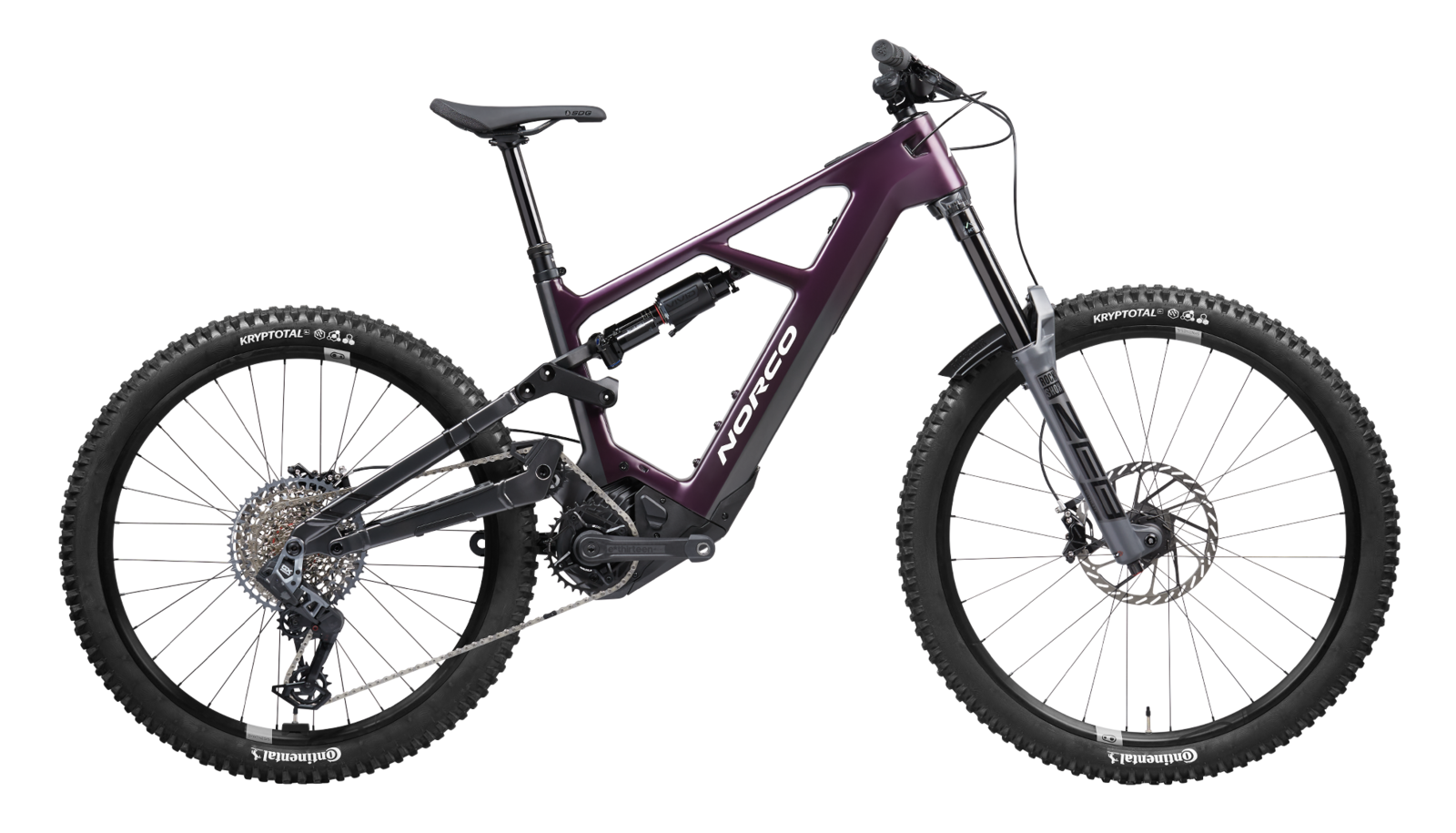









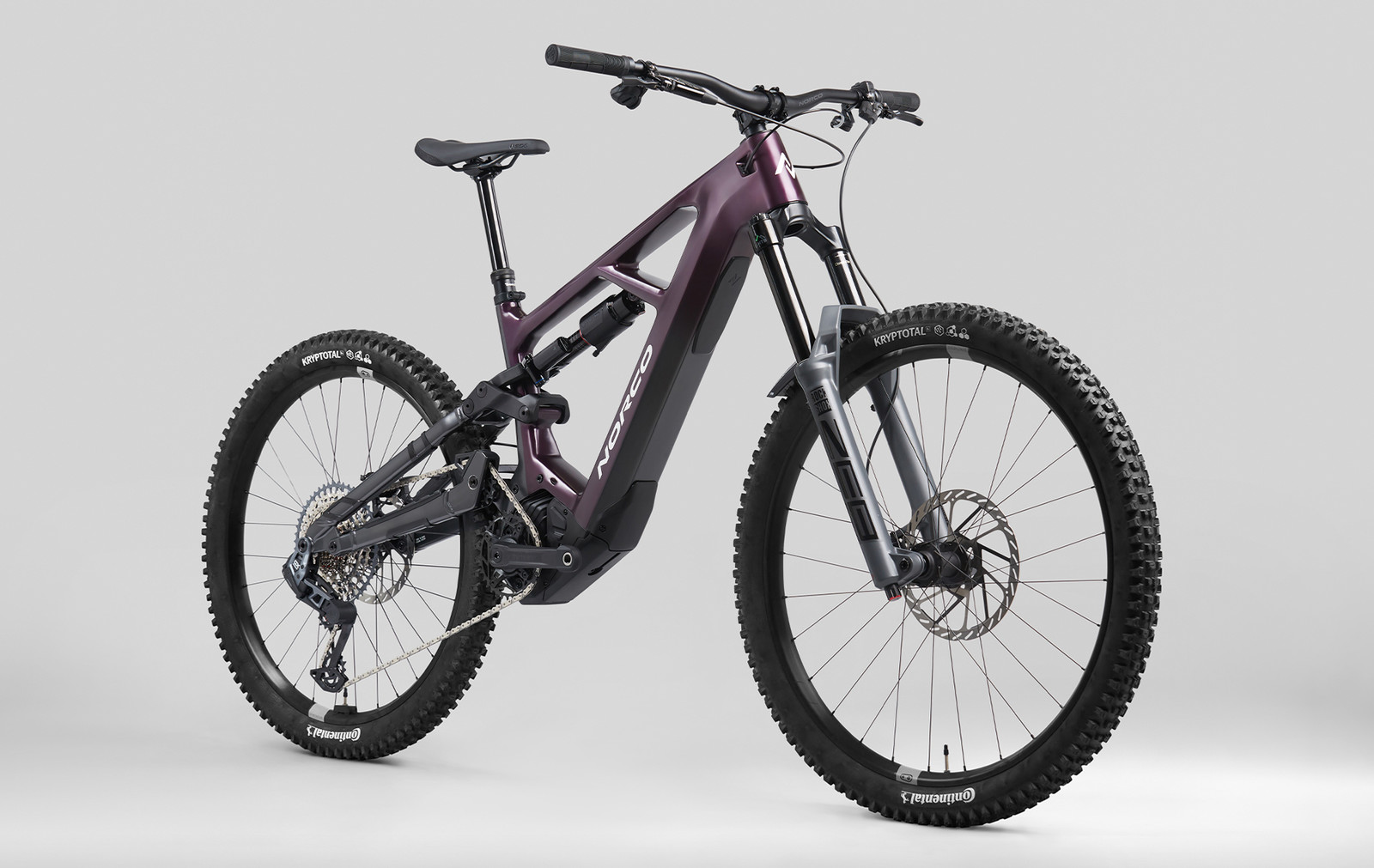
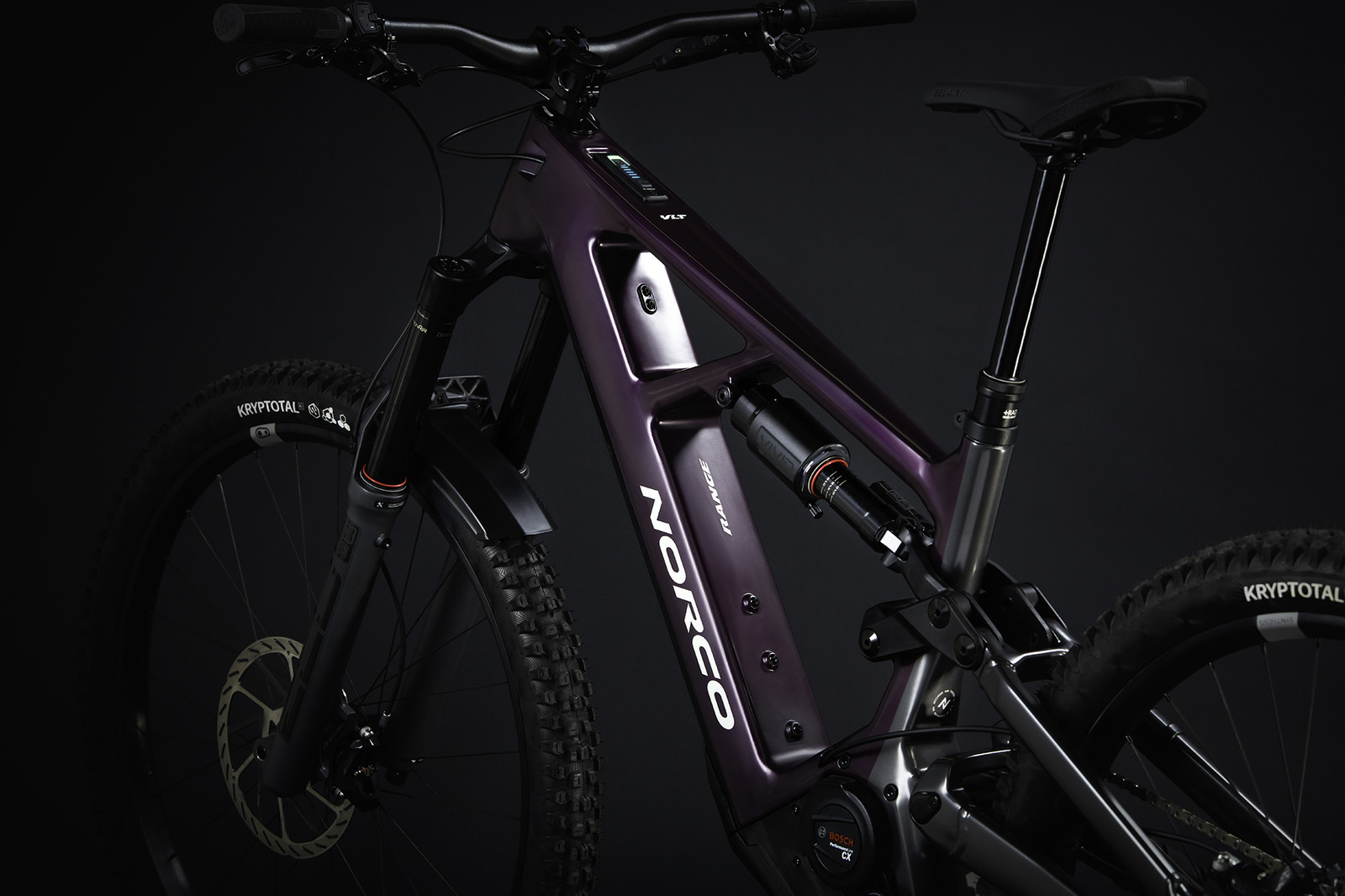
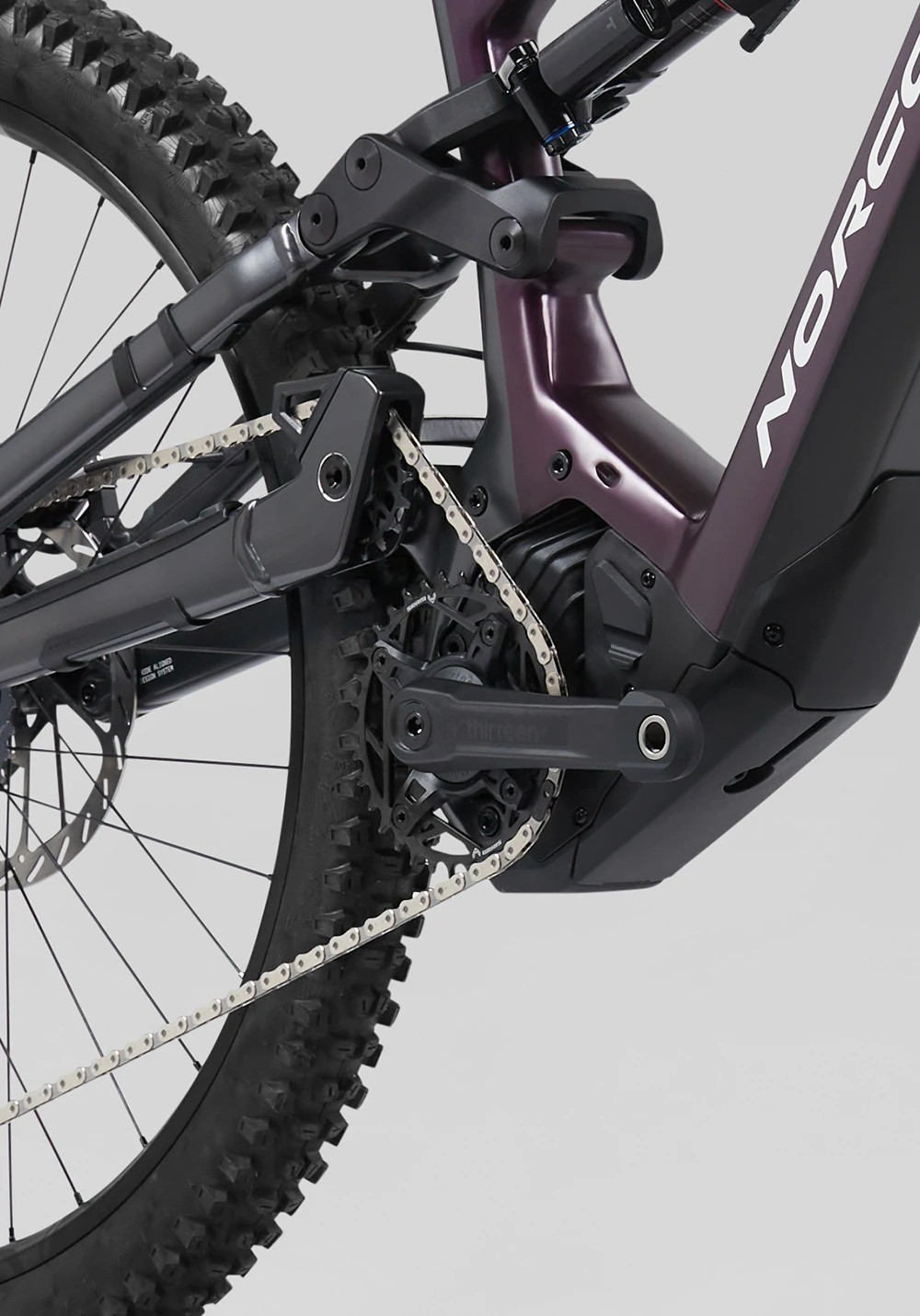


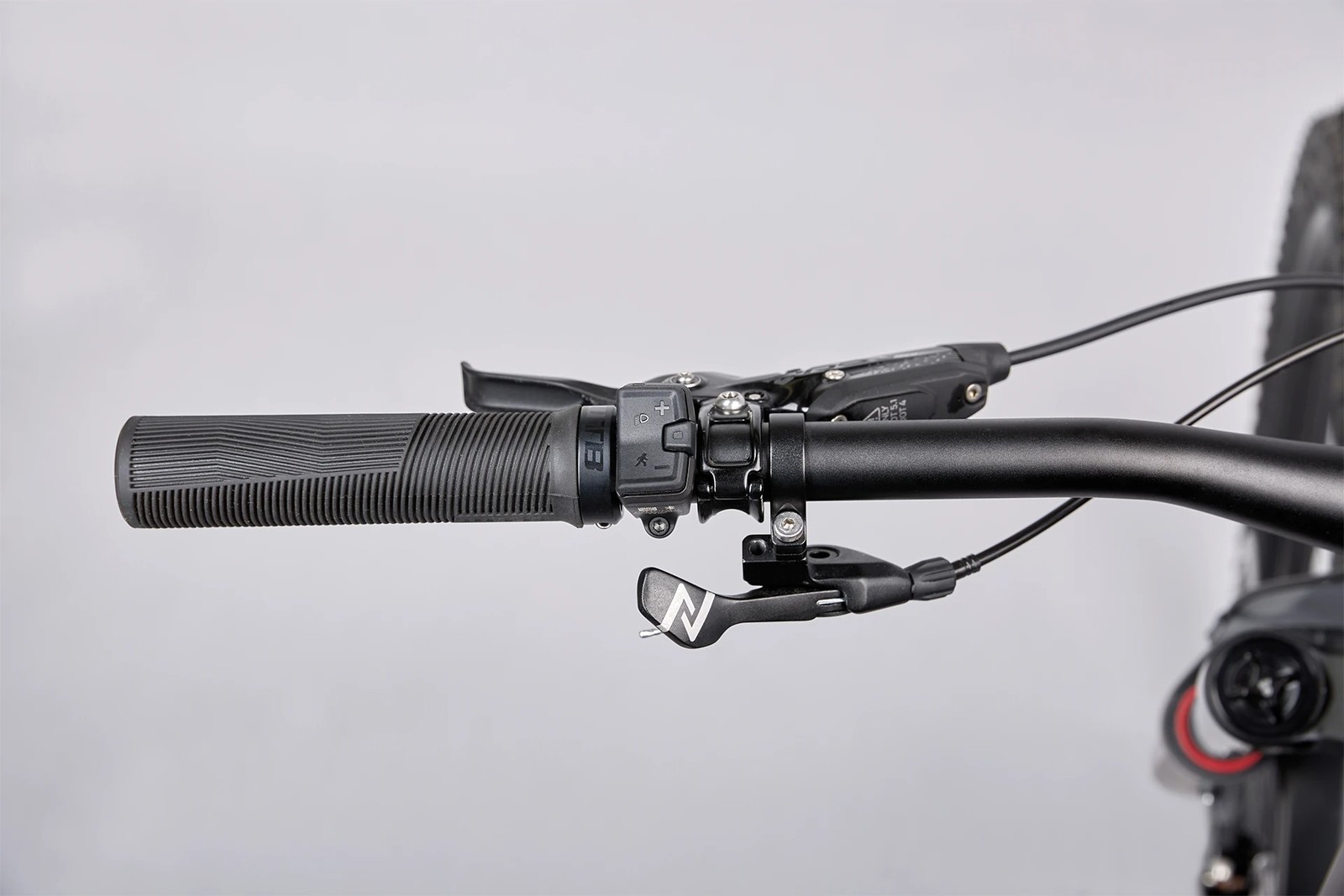
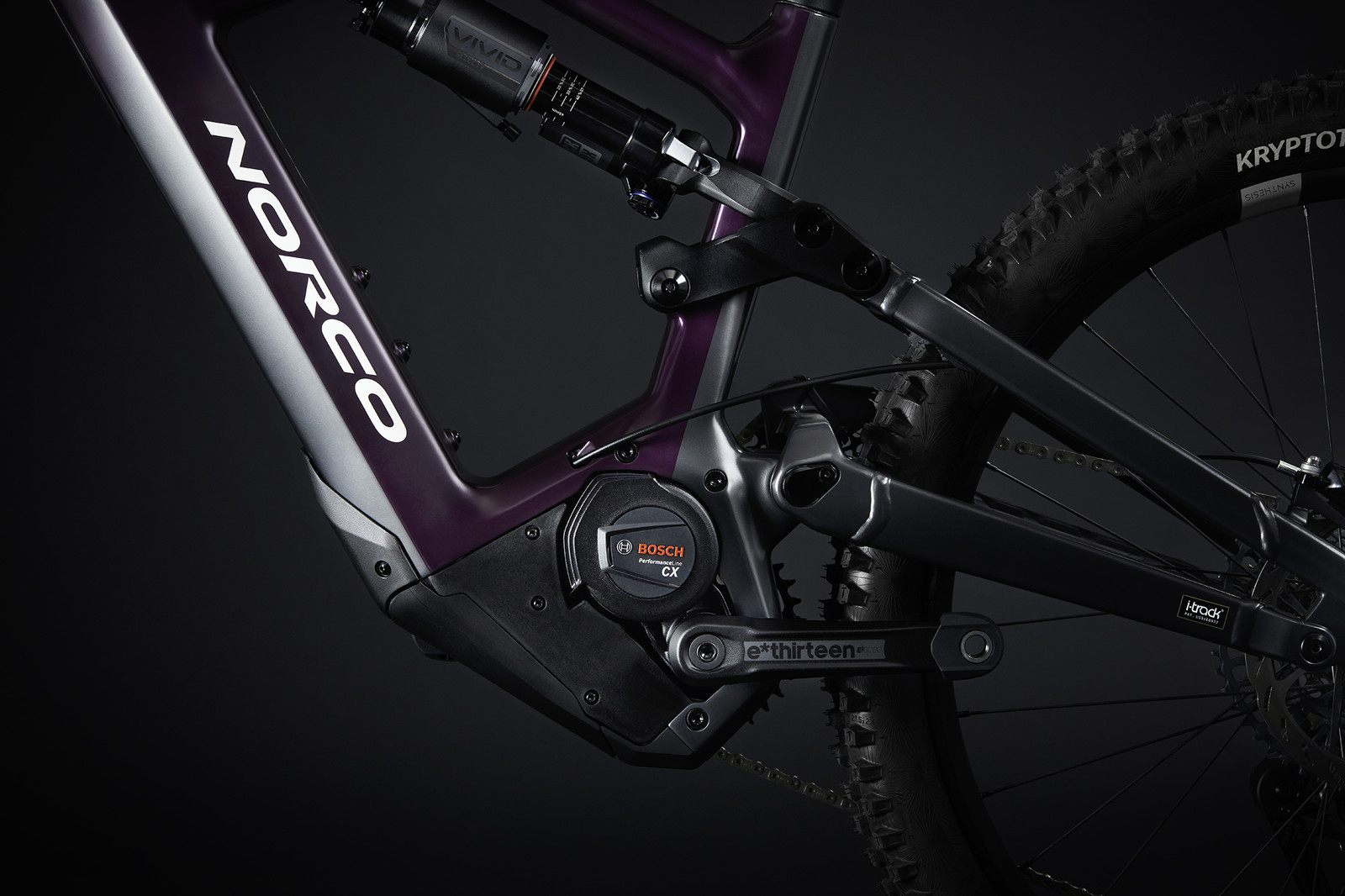
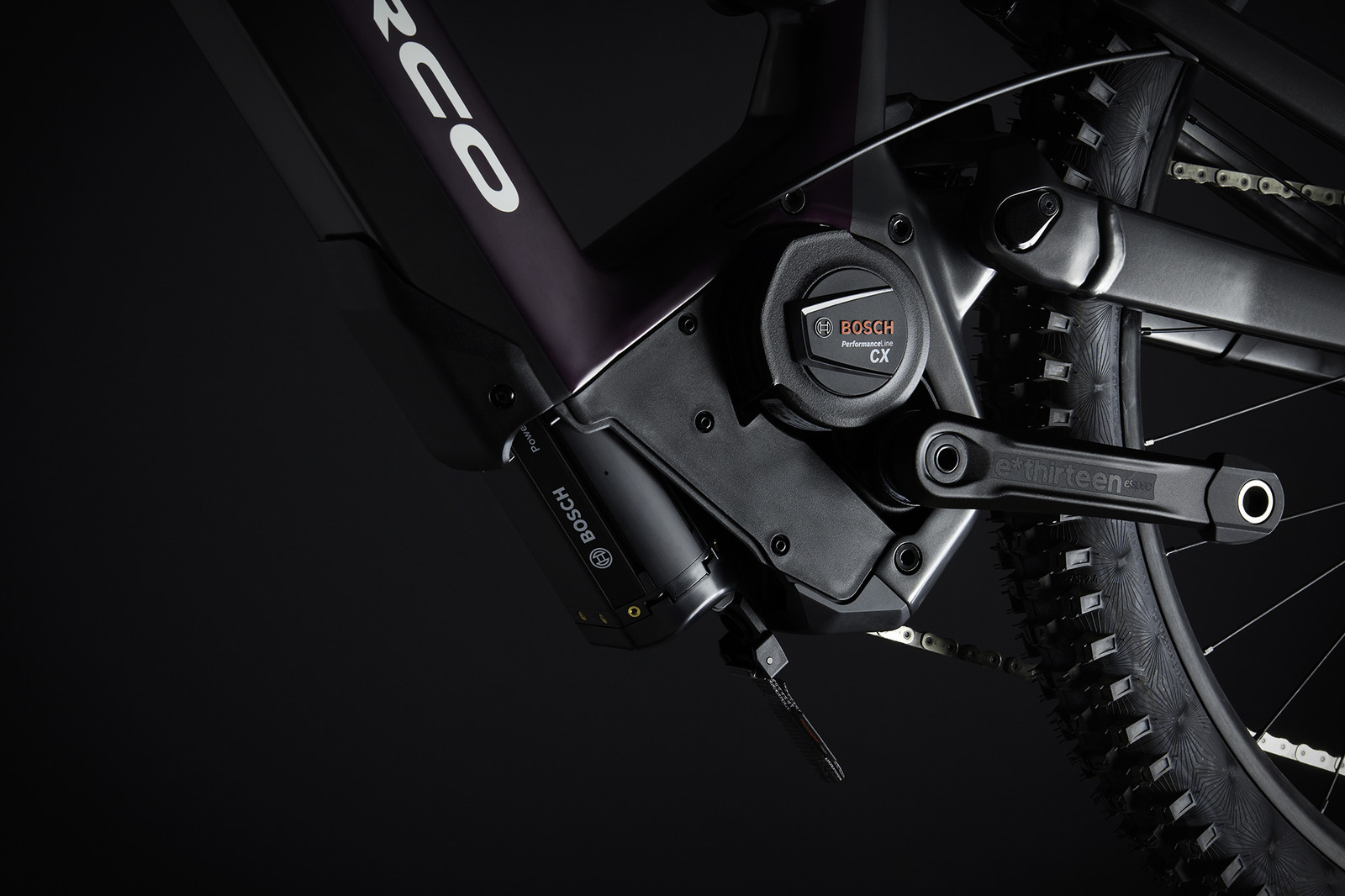

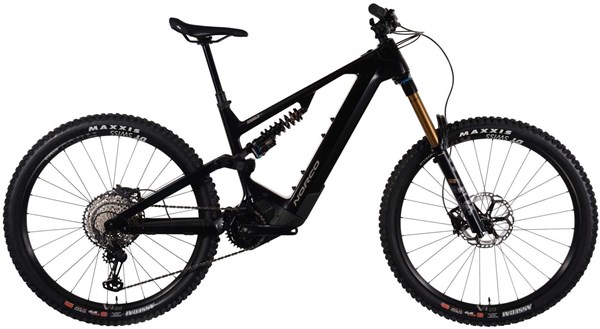






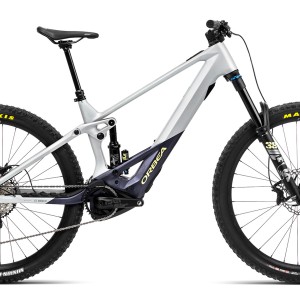
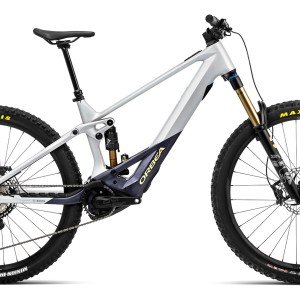
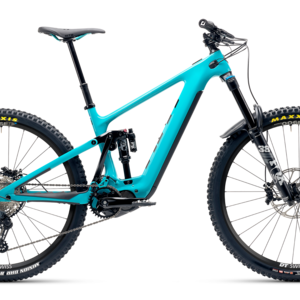
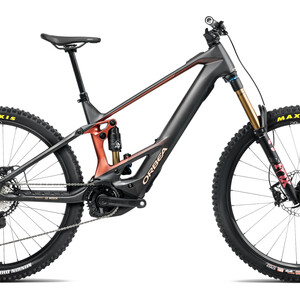
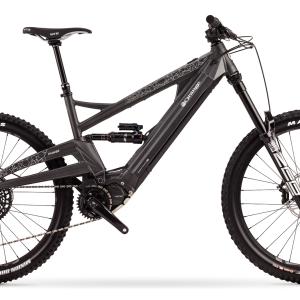








1 comments
Post a reply to: Large and In Charge - Norco Range VLT Review